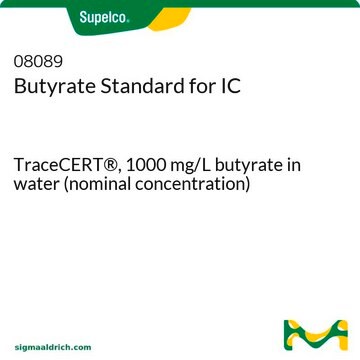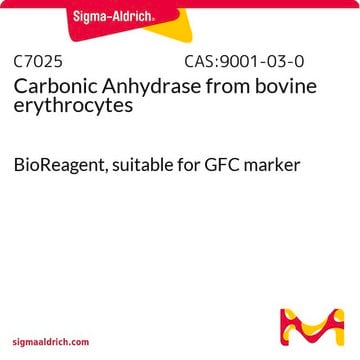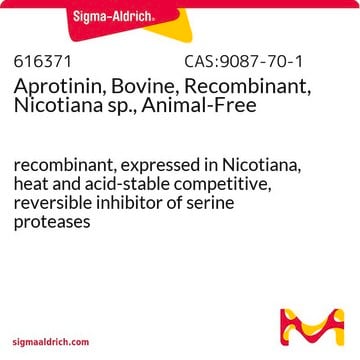10820
Aprotinin aus Rinderlunge
lyophilized, ~80% (HPCE), crystalline (fine), white, ≥3500 U/mg
Synonym(e):
BPTI, Boviner pankreatischer Trypsin-Inhibitor, Trasylol, Trypsin-Inhibitor (basisch, pankreatisch)
About This Item
Empfohlene Produkte
Biologische Quelle
bovine lung
Assay
~80% (HPCE)
Form
crystalline (fine)
Qualität
lyophilized
Spezifische Aktivität
≥3500 U/mg
Mol-Gew.
~6,500
Methode(n)
electrophoresis: suitable
Farbe
white
Löslichkeit
phosphate buffer: 5 mg/mL, clear, colorless (PH 7.6 (70 mm phosphate))
UniProt-Hinterlegungsnummer
Lagertemp.
2-8°C
InChIKey
ZPNFWUPYTFPOJU-UHFFFAOYSA-N
Angaben zum Gen
cow ... PTI(404172)
Suchen Sie nach ähnlichen Produkten? Aufrufen Leitfaden zum Produktvergleich
Anwendung
Biochem./physiol. Wirkung
Einheitendefinition
Lagerklassenschlüssel
11 - Combustible Solids
WGK
WGK 1
Flammpunkt (°F)
Not applicable
Flammpunkt (°C)
Not applicable
Persönliche Schutzausrüstung
Eyeshields, Gloves, type N95 (US)
Analysenzertifikate (COA)
Suchen Sie nach Analysenzertifikate (COA), indem Sie die Lot-/Chargennummer des Produkts eingeben. Lot- und Chargennummern sind auf dem Produktetikett hinter den Wörtern ‘Lot’ oder ‘Batch’ (Lot oder Charge) zu finden.
Besitzen Sie dieses Produkt bereits?
In der Dokumentenbibliothek finden Sie die Dokumentation zu den Produkten, die Sie kürzlich erworben haben.
Kunden haben sich ebenfalls angesehen
Unser Team von Wissenschaftlern verfügt über Erfahrung in allen Forschungsbereichen einschließlich Life Science, Materialwissenschaften, chemischer Synthese, Chromatographie, Analytik und vielen mehr..
Setzen Sie sich mit dem technischen Dienst in Verbindung.










